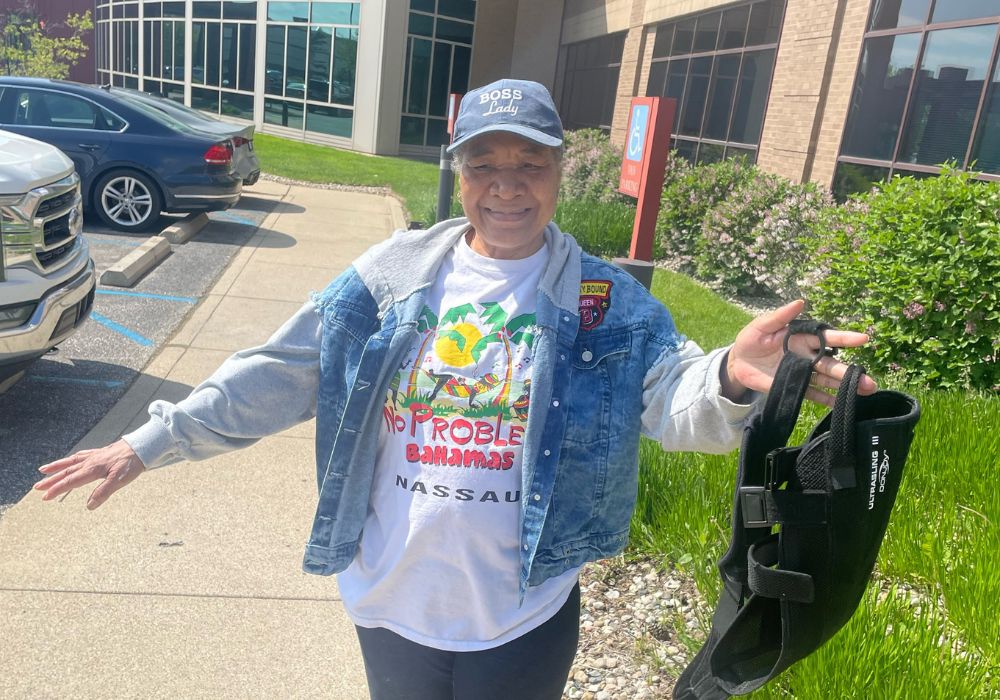Frozen shoulder, also called adhesive capsulitis, causes pain and stiffness in the shoulder, which overtime can make the shoulder hard to move.
Anatomy
The shoulder is made up of three bones: the upper arm bone (humerus), the shoulder blade (scapula) and the collarbone (clavicle). The shoulder is a ball-and-socket joint, which means the ball of the upper arm fits into a shallow socket in your shoulder blade. Strong connective tissue, called the shoulder capsule, surrounds the joint. To help your shoulder move easier, synovial fluid lubricates the shoulder capsule and joint.
In a frozen shoulder, the shoulder capsule thickens and becomes tight. Stiff bands of tissue develop and sometimes there is less synovial fluid in the joint.
What is the main cause of frozen shoulder?
The cause of frozen shoulder is not fully understood; however, there are a few factors that put you more at risk.
- Diabetes: Frozen shoulder occurs more often in people with diabetes, affecting 10 to 20 percent of these individuals
- Other Diseases: Hypothyroidism, Parkinson’s disease and cardiac disease
- Immobilization: Frozen shoulder develops after a shoulder has been immobilized for a period of time due to surgery, a fracture or other injury
Symptoms
Inability to move the shoulder develops in three stages:
- Freezing: In this stage the shoulder slowly develops more pain and the shoulder begins to lose range of motion; this can last six weeks to nine months
- Frozen: Painful conditions can improve during this stage; however stiffness remains and during the four to six months of this stage, daily activities are very difficult
- Thawing: Shoulder motion slowly improves and can return to normal or close to normal strength typically takes from six months to two years
Pain is usually located over the outer shoulder area and sometimes the upper arm.
Physician examination
To determine whether you have frozen shoulder, your physician will ask you for a complete medical history, have you describe your symptoms and conduct a physical examination. An X-ray or MRI may be necessary to rule out other problems.
What is the best treatment for frozen shoulder?
Frozen shoulder generally gets better over time, although it may take two to three years. The focus of treatment is to control pain and restore motion and strength; more than 90 percent of patients improve with relatively simple treatment.
Nonsurgical treatment
- Non-steroidal anti-inflammatory medicine such as ibuprofen
- Steroid injections
- Physical therapy
Surgical treatment
Surgery may be necessary if your pain causes disability and is not relieved with nonsurgical methods. Surgery can involve a manipulation under anesthesia to restore motion or a shoulder arthroscopy can be done to do a more controlled release of the capsule and to address other pathology.
Rehabilitation
Physical therapy is very important to maintain the range of motion that was gained during surgery. Typically this begins the next day and the first 6 weeks are critical to prevent recurrent scarring and loss of motion. Most patients have recovered from surgery within the first two to three months.
Learn more about shoulder treatment at OrthoIndy.
Schedule an appointment
Your well-being is important to us. Click the button below or call us to schedule an appointment with one of our orthopedic specialists. If your injury or condition is recent, you can walk right into one of our OrthoIndy Urgent Care locations for immediate care. For rehabilitation and physical therapy, no referral is needed to see one of our physical therapists.





